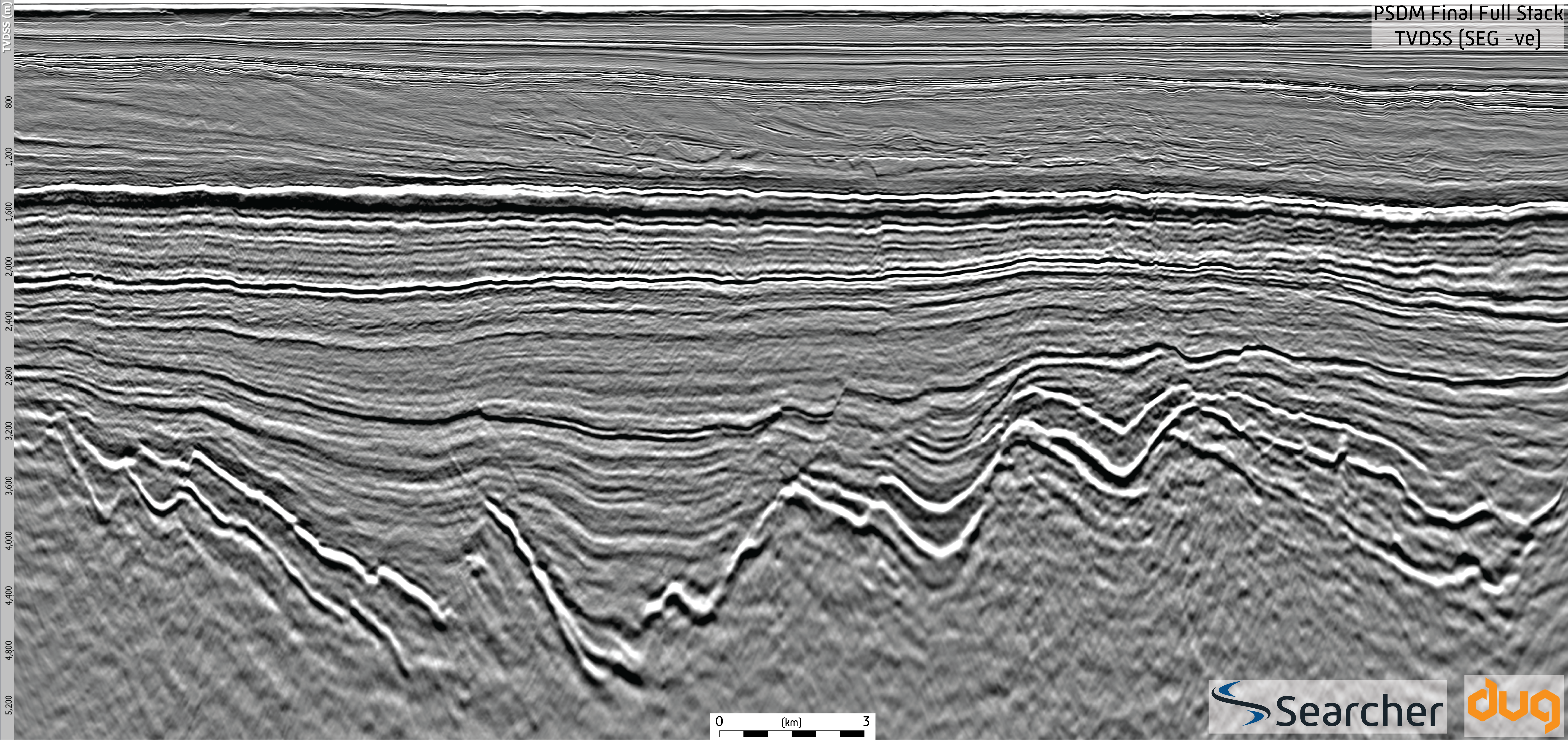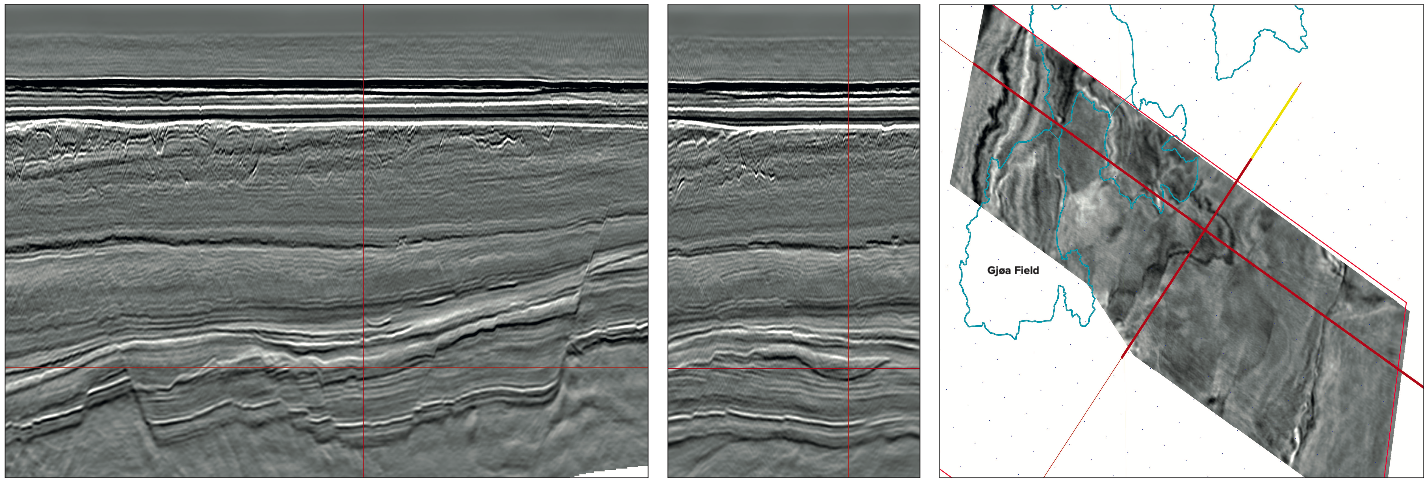
Buzzard II: the sequel
How about looking for another Buzzard field, next to the one that was found over 20 years ago?
Our geological understanding is only ever a transient one – based on integration of well and seismic data at any given time. To change the story we have two choices; re-understand the integrated models we build, or change the data. In the Buzzard Field area of the North Sea there are many wells that tightly constrain the geological models so they are resilient and obdurate to change. Adding more well data is expensive – so to find the next Buzzard we needed to change the seismic dataset.

Buzzard field
The 2001 Buzzard discovery well 20/6-3 is located in the North Sea, about 60 km northeast of Aberdeen. This well drilled a stratigraphic trap and made one of the largest oil discoveries in the UK for the last 40 years. Lying 50 km east of the Scottish mainland in shallow water (<100m), the discovery well encountered high quality 32° API oil in Oxfordian to Volgian age Jurassic, base of slope, submarine gravity flow sands. This reservoir is known now as the Buzzard Sandstone Member and displays excellent porosity and permeability (ca 1.5 D).
The trapping mechanism for the field involves a complex up-slope stratigraphic pinch-out of reservoir sands to the west combined with a downthrown faulted closure against Palaeozoic basement. This stratigraphic trap was considered high-risk pre-drill. The risk of not imaging a thief sand in the stratigraphic bypass of the channel systems feeding the base of slope fan was high in 2001 despite 3D having been collected. On that early data, the imaging of a large number of channels cutting the slope would have unnerved the bravest of us. Yet, the bravest of us drilled the prospect and, as they say, the rest is history.
The new search for Buzzard II
To discover another Buzzard, Searcher re-processed as a multi-client survey, a total of 1560 square km of 3D from four overlapping 3D seismic surveys vintage acquired between 1999 and 2004, located to the west of the Buzzard field. This dataset is called “Big Buzz”.
DUG were awarded the contract for the reprocessing of these data, and the product of their work is truly astonishing (Figure 1 and foldout). The four surveys had been acquired on different azimuths, so multi-azimuth imaging was possible in areas of survey overlap. The re-processing sequence included deghosting, 3D SRME, Radon demultiple, noise attenuation, 3D TTI prePSDM, FWI velocity model building and Kirchhoff PSDM. The results are stunning from the sea floor down and have led to the re-imaging of the Jurassic plays in this area.

A new Ettrick
One of the primary targets for re-imaging was to reveal the relationship between the Buzzard sands and the slightly younger Ettrick sands. Ettrick sands provide a thick reservoir interval in the Ettrick Field to the north but pinch out to the SW before reaching Buzzard. Imaging the pinch out of the Ettrick sands and locating a new Ettrick stratigraphic trap was not possible on the vintage data, which is noisy at the point of pinch out making the play somewhat ambiguous. Fortunately, the new processing images this pinch-out well and a prospective trap has been defined on acreage held by Finder Energy, an early adopter of the reprocessed seismic and beneficiary of seeing how the new data changes an old story.
The most attractive play
However, the most attractive new play on the data is the imaging of an Upper Jurassic depositional system and potential ‘Buzzard II’. Both the new imaging and a study by Lyme Bay using spectral decomposition (Figure 2) have revealed not only a large fan down-dip of the basement framing the basin, but also it has revealed the detailed sedimentology within this fan. A new ‘Buzzard’ age sand fairway appears at last to have revealed itself. Lying close to existing infrastructure this target, constrained by the most modern seismic available looks extremely attractive (Figure 3). The imaging of Buzzard II reveals super-steep feeder channels, devoid of sand and more likely to represent bypass zones than even those on the Buzzard accumulation.
Other prospects have been defined by Finder Energy as leaping out of the new data too, both within the Jurassic and below in the Zechstein where there is a very large and distinctive carbonate buildup with a karstic dendric network below the Kimmeridge Clay Source rock.

The next big bird
The stratigraphic play-led future of North Sea exploration is looking in the best place for any exploration; next to the last place you found oil! With the benefit of reprocessing the vintage 3D datasets, we have a chance to change the narrative of the past that was based on the data of the past. Buzzard II will only be the beginning, and re-imaging legacy datasets like “Big Buzz” is the start of finding the next big bird nesting by the previous big bird in the UK’s North Sea.




